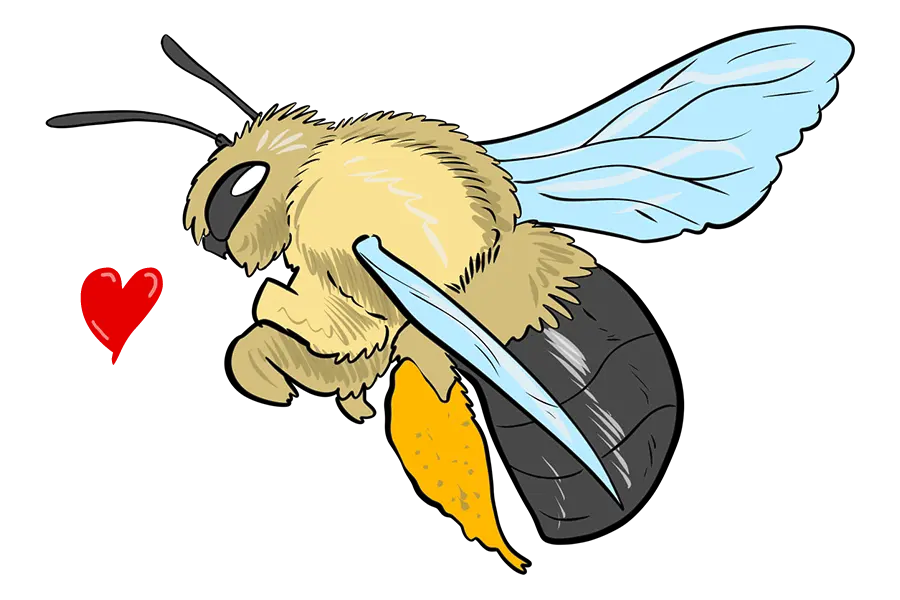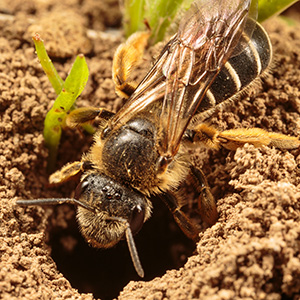 Offering homes for bees
Offering homes for bees
People often think of bee homes as the hive boxes provided by beekeepers for their honey bees. Honey bees are in fact the outliers in the bee community, and represent just a small handful of species out of the estimated 21,000 types of bees worldwide.
In their original habitats, honey bees (which are not native to North America) nested in tree hollows, often very high up off the ground (away from predators). Bumble bees (which are social bees like honey bees, with queens and workers, but with far smaller colonies) favor old mouse burrows or other such similar cavities in the ground.
Bees live on every continent except Antartica. They live in deserts, the tropics, and everything in between. The highest diversity of bee species can be found in Mediterranean-style climates, but there are also a surprising number of bees to be found in deserts.

Award-winning pre-built nest boxes (UK)
- Solitary Bee Observation Nest Box
- Summer Unit for Additional Species
- Bumble Bee Nest Box
- Natural Kapok Bumblebee Bedding
Companies selling suitable bee houses (US)
Building (or buying) “bee hotels”
You may have seen mason bee boxes or “bee hotels” sold in stores. More attention is being focused on mason bees, because they are excellent orchard pollinators, and farmers see them as a potential fallback pollinator to rented honey bee hives. Mason bees (also called orchard bees) like to nest in holes in wood, and seal their nests with mud. They will also nest in tubes… all they really need are the right sized nesting tunnels, a close source of food, and a supply of mud (don’t forget to ensure there’s mud for them!)
Beeware of mass-produced “bee hotels”, which can do much more harm than good, especially in the long run (read more about the horrors of mass-produced bee houses).
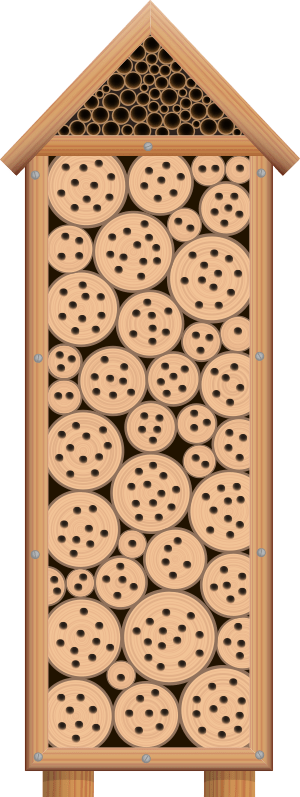
Wood nesting blocks
If you build your own “bee hotel”, there are a number of designs to choose from. To attract occupants, drill nesting holes between 1/4″ (6mm) and 3/8″ (10mm) in diameter into a piece of wood (any type of treatment/preservative-free wood besides cedar), with a length of 5″-6″ (13-15cm). Length is important, because it changes the sex ratio depending on how long the tunnel is (bees also modify tunnel length, shortening by adding nesting material plugs).
For mason bees (the most common resident), their ideal holes tend to be 5/16″ (8mm) in diameter, with a length of around 6″ (15cm). Place the blocks out in early spring (leaf-cutter bees also favor these same nesting hole sizes, so they'll often use unoccupied holes later in summer when they emerge).
New bees will emerge the following year (depending on the bee, sometime between early spring to early summer). One thing to watch out for is the ability to manage these nests… some people open them up and store cocoons in their fridge in winter, cleaning each of the long nesting cavities so as to avoid the spread of parasites (which love bee boxes too)! If you do drill holes into wood, be sure to put out fresh wood with new holes the following year (once you see your hotel has emptied) to avoid parasites and infections building up.
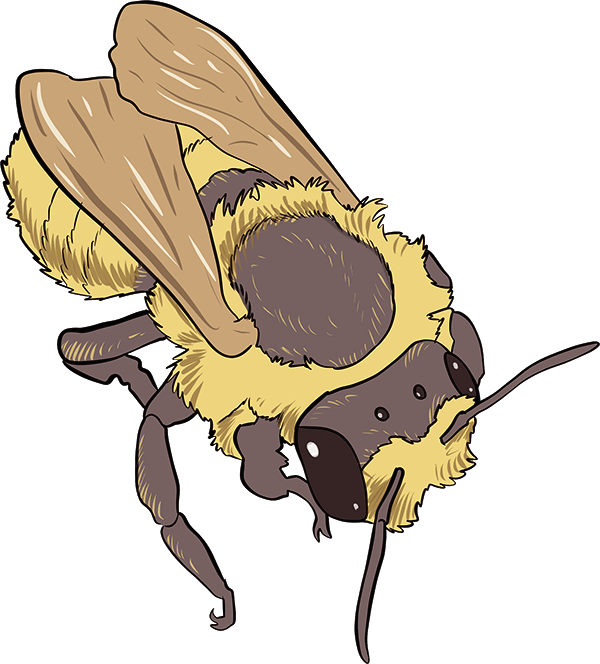
Nesting tubes & stems
Instead of wooden “bee blocks”, some people use stems or paper tubes. One way to do this is to gather a number of stems that are naturally hollow (such as bamboo, reeds, or teasel). Cut these into lengths between 6″-8″ (15-20cm), and bundle them together inside of a container (a plant pot, a tin can, something similar) such that the ends are up against the back of the container. If you cut each just below the stem node, you will get a nice sealed end at one end. In early spring, mount the container on a tree or post several feet from the ground, such that the tubes are parallel to the ground.

Detailed How-To’s
- How to Make and Manage a Bee Hotel:
Instructions that Really Work (PDF) - Bumble bee flower pot nest:
everything you need to know (PDF) - What size should the holes be in
a bee hotel? (Dave Goulson) (video)
Fact Sheets
- 5 Ways to Increase Nesting Habitat (blog)
- Nesting & Overwintering Habitat (PDF)
- Nests for Native Bees (PDF)
- Tunnel Nests for Native Bees (PDF)
- Save the Stems (PDF)
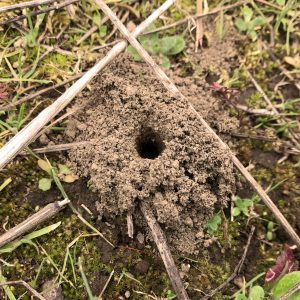 Because most bees are ground-nesting bees, one of the most important things you can do to help pollinators is to provide bare patches of soil in sunny locations. Not everyone appreciates how this may look in their garden, but you’ll be well-rewarded when a community of ground-nesting bees move in! If you want to make a real project of it, here are some (PDF) instructions on building a dedicated ground-nesting “bee bank”.
Because most bees are ground-nesting bees, one of the most important things you can do to help pollinators is to provide bare patches of soil in sunny locations. Not everyone appreciates how this may look in their garden, but you’ll be well-rewarded when a community of ground-nesting bees move in! If you want to make a real project of it, here are some (PDF) instructions on building a dedicated ground-nesting “bee bank”.
The majority of the 21,000 or so bee species comprise solitary bees nesting in the ground, in tunnels inside wood, or in dried hollow stems (some desert bees even burrow into sandstone!) Even though each female provisions her own nest for her own offspring, they're not averse to nesting in semi-social “communities” that can number into the thousands. If you see a number of miniature volcano-type mounds in your soil, you may have stumbled on a group of ground-dwelling bees, such as mining or sweat bees! Occasionally these bees will have the odd disagreement (when one enters another's hole by mistake), but by and large such bee societies are peaceful.
Around 70% of bees nest in bare earth
Bumble bee flower pot and box nests
Flower pot nests are simple and fun projects to do in early spring! If you don't get residents the first year, don't despair, just leave your bumble bee home sites in place and you may find you've providing a home to a hundred or more bumble bees in the future!
For the flower pot nest design, you'll need a flower pot around 8" (20cm) in diameter, along with a bit of hosepipe, and some chicken wire. For nesting materials, bumble bees love Kapok fibersmixed with a bit of cut up dried grass or straw (and if you can add a bit of mouse-scented bedding, so much the better, as bumble bees naturally seek out abandoned mouse holes in which to begin their colonies.
Most bumble bees live underground, so above-ground nest designs (such as an upturned flower pot) all have a large amount of internal space dedicated to insulation, and they're all waterproofed with some kind of material on top (plastic sheeting, roofing materials, shale, etc.) Soil is an excellent insulator, but there are various ways to “fool” bees into thinking they’re living underground (and some don’t seem to mind simply using a slightly above-ground entrance; not to mention tree bumble bees in continental Europe and Britain, which prefer bird boxes)!
Although appealing to the home-seeking tastes of a queen bumble bee seems more art than science, success is more likely when new bee homes are located in shady spots along a fence or hedge.
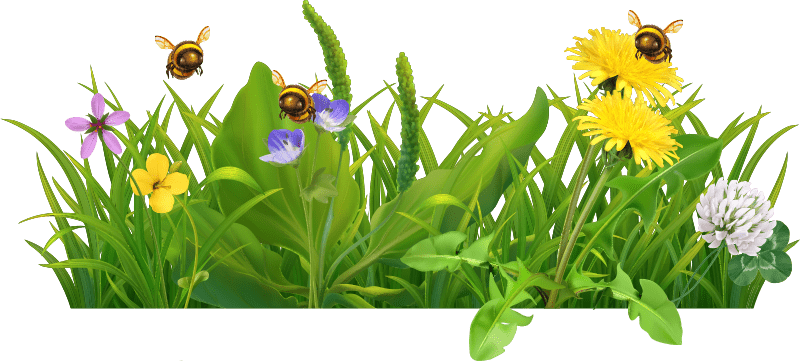
What else can I do to help?
Offer local bees a diverse banquet during all temperate seasons of the year (generally bees are active from early spring through late autumn).
- Plants to choose for your area
- Tips on sourcing bee-friendly plants
- Creating native wildflower meadows

